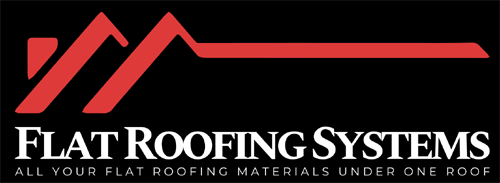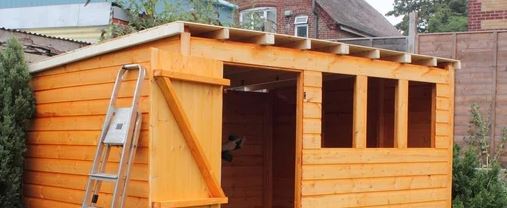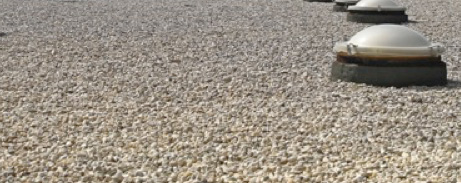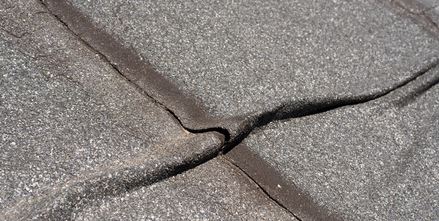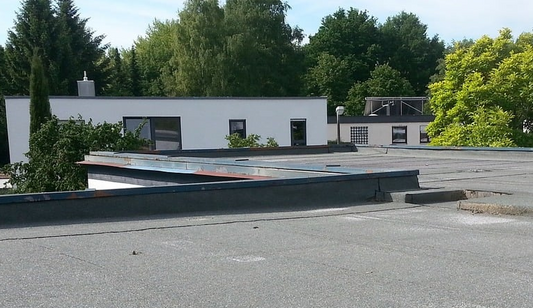First, analyze the weather patterns in your area. If your region experiences heavy rainfall or frequent snow, you might want to consider polyester-reinforced felt, which is known for its durability and resistance to tearing. On the other hand, traditional bitumen felt is a cost-effective option that provides reliable waterproofing.
The choice of felt also affects the appearance and ease of installation of your shed roof. Polyester-reinforced felt, for example, may offer a smoother finish and be easier to handle during installation compared to heavier, more cumbersome materials.
Understanding these factors can help you make an informed decision that balances functionality, aesthetics, and cost. This approach not only ensures your shed is protected from the elements but also enhances its overall look and longevity.
Always aim for a material that not only fits your budget but also reduces the need for frequent replacements, offering better long-term value.
Key Points
- When selecting felt for your shed roof, consider your local weather conditions. If your area has strong sunlight, opt for bitumen felt which offers UV protection. In windy locales, choose reinforced polyester felt for better resistance to tearing.
- It's crucial to assess the longevity of the felt. Reinforced polyester felt, for example, can effectively protect your roof for up to 15 years. This long-term protection can save you money and hassle over time.
- While pricing is important, investing in high-quality brands like IKO or Chesterfelt could be more economical in the long run. These brands are known for their durability, providing better long-term value despite the initial cost.
- For effective installation, use the right adhesives and ensure that the felt layers overlap. This method helps create a robust, waterproof seal that keeps your shed dry and secure.
- Finally, consider the appearance of your shed. Choose a felt color and material that not only suits the style of your shed but also offers functional benefits like reflecting heat, which can keep the interior cooler.
In essence, choosing the right shed roof felt involves understanding your specific environmental needs, investing in quality for longevity, ensuring proper installation, and selecting materials that both look good and perform well under your local conditions.
Understanding Shed Felt
Shed felt plays a crucial role in protecting your shed roof from moisture. It comes in a variety of materials such as mineral, polyester, and bitumen. Each type provides different levels of durability and resistance to weather conditions. Choosing the right shed felt can significantly affect your shed's ability to endure harsh weather over time.When selecting shed felt, consider the climate in your area. For example, in areas with frequent severe weather, polyester or fiberglass felts are beneficial. These materials aren't only lightweight but also strong enough to withstand heavy rain, strong winds, and long-term sun exposure.
The quality of the shed felt is also vital. High-quality options from well-known brands might offer up to 15 years of protection, whereas less expensive alternatives may not perform as well, necessitating more frequent replacements. Investing in a higher quality felt enhances both the durability and the appearance of your shed roof.
Regular maintenance is essential. It includes routine inspections and timely repairs, which help prolong the life of the roof felt and keep your shed secure year-round.
Types of Roofing Felt
Let's dive into the different types of roofing felt you might consider for your shed. Each type offers unique advantages, so picking the right one is crucial for both the longevity and upkeep of your roof.Starting with traditional mineral felt, this option is popular due to its straightforward installation and reliable waterproofing capabilities. It's an excellent choice if you want a no-fuss solution. You can easily attach it using clout nails.
For enhanced durability, think about using polyester reinforced felt. This material is especially robust and can withstand the often unpredictable weather in the UK, making it a wise choice for your shed's long-term protection.
Bitumen felt is another great option, known not only for its excellent waterproofing but also for its resistance to UV damage. This quality ensures it remains unaltered by the sun's intense rays, preserving both its appearance and effectiveness.
If you need a material that offers a little more flexibility, fibreglass felt could be the way to go. It provides strong protection without compromising the structural integrity of your shed.
Lastly, consider rubber felt if you're interested in a modern material that offers outstanding durability and resilience. This choice could be particularly beneficial if you're looking for a roofing solution that will last a long time without needing frequent replacements.
Each type of roofing felt serves a specific purpose and can be chosen based on the specific needs of your roofing project.
Assessing Weather Resistance
When choosing felt for your shed, consider the climate in your area and the specific weather challenges you might face. For instance, if you live in a region with frequent rainfall, heavy snow, or strong winds, selecting a durable felt is crucial. This will ensure that your shed remains protected and reduces the need for repairs or replacement.It's advisable to review the manufacturer's details to see how their felts stand up against severe weather. Opt for a felt that's rated highly for weather resistance. Such felts are often engineered with advanced weatherproofing technologies, making them more capable of handling intense rain and wind.
This is particularly important in places like the UK, where the weather can be very unpredictable. By choosing a robust felt, you safeguard your shed's roof, helping to prevent water damage and maintain the structure's overall integrity.
Evaluating Durability
Assessing the durability of shed felt is essential after considering its resistance to weather. Polyester reinforced felt stands out due to its impressive durability, often lasting up to 15 years. This longevity makes it a reliable option for those seeking a long-term solution.When exploring your choices, it's important to examine the materials used. Felts made from bitumen are known for their robustness, especially in resisting UV rays that can deteriorate other materials quickly. This UV resistance ensures that the felt continues to protect your shed roof from water and weather damage consistently over the years.
It's also wise to choose products from well-known brands. These brands are often recognized for their commitment to quality and durability, which can save you from the disappointment and additional costs associated with inferior products that fail under pressure.
Considering Cost Factors
When deciding on shed felt, it's important to balance the initial cost with the overall long-term benefits. While the least expensive option might appear attractive, it often leads to frequent replacements and added maintenance costs. Instead, assess both the purchase price and the expected durability of the felt to determine the most cost-effective choice over time.Consider these essential aspects:
1. Initial Cost: Lower-priced felts might seem budget-friendly initially, but they could require more frequent repairs or replacement, increasing your costs in the long run.
2. Maintenance Costs: Although higher-quality felts may cost more upfront, they can minimize the need for future repairs, saving you money over time.
3. Brand Reputation: Opting for felts from well-known brands might cost more, but these products often offer better durability and reliability.
4. Cost-Effectiveness: Calculate the price per square meter for different felts. This comparison will help you identify which felt provides the most value, balancing affordability and quality.
Measuring Required Materials
To determine the necessary amount of felt for your shed roof, first measure the roof's dimensions. Using a tape measure, note the length and width, then multiply these numbers to find the roof's total area in square feet. Remember to include the roof's overhang in your calculations, as this additional area is critical for complete coverage.Next, consider the overlap required for each strip of felt. Overlapping each strip by approximately three inches helps ensure that water doesn't leak through the seams. Divide the total roof area by the width of the felt roll, adjusting for this overlap to calculate the total length of felt needed in linear feet.
It's advisable to buy a bit more felt than your calculations suggest. This extra felt accounts for any unforeseen adjustments or cuts during the installation process. Purchasing an additional 10% of felt can prevent the inconvenience of needing more material in the middle of your project. This approach not only saves time but also helps ensure a smooth installation process.
Waterproofing Qualities
Select shed felt with superior waterproofing capabilities, such as those made from bitumen, to effectively shield your shed roof against rain and moisture infiltration. Using this kind of material is crucial for keeping water out and protecting the underlying structure of your shed. A good choice in felt significantly enhances the lifespan and robustness of your roof.Here are several important reasons to focus on waterproofing qualities in shed felt:
1. Longevity: Waterproof felt helps maintain the structural integrity of your roof, leading to a longer lifespan. This means you'll spend less time worrying about replacing the felt or fixing damages caused by water.
2. Cost-Effectiveness: Choosing high-quality waterproof felt is a smart financial decision. It reduces the frequency of maintenance and repairs needed due to water damage, ultimately saving you money.
3. Protection: When installed correctly, waterproof shed felt ensures that the inside of your shed remains dry, preventing problems like mold and mildew, which can arise from excess moisture.
4. Peace of Mind: Robust waterproofing means you don't have to be concerned about the impact of weather on your shed. You can feel confident that your stored items are protected and dry, no matter the external weather conditions.
Wind Resistance Features
When selecting shed felt, it's crucial to opt for materials that have strong wind resistance features. Materials such as reinforced polyester or bitumen are excellent choices due to their durability in high-wind scenarios.More importantly, the wind rating of the felt should be considered. A higher wind rating indicates a better ability to withstand strong winds, ensuring that your roof remains secure and intact.
Moreover, the effectiveness of the adhesive used on the felt is critical. The right adhesive ensures that the felt remains firmly attached to your roof, preventing it from lifting or peeling off during windy conditions. This is crucial for protecting both the structure of your shed and the items inside it.
Additionally, choosing felt with overlapping seams adds an extra layer of security by eliminating gaps through which wind might penetrate.
Longevity of Materials
How long do you wish your shed roof felt to endure? The choice of material significantly influences the lifespan of the felt, affecting how frequently you'll need to replace it as well as the associated maintenance costs and efforts.Here's a clear guide on selecting the most appropriate felt:
1. Polyester Reinforced Felt: This variety can last up to 15 years. It's designed to handle extreme weather, making it a solid choice for those seeking long-lasting durability and fewer replacements.
2. Green Mineral Felt: Generally lasts around 5 years. While it's less expensive initially, you may find yourself replacing it more often than the polyester type.
3. Evaluating Durability: It's crucial to compare the durability of the felt with its price. Although more robust materials might cost more upfront, they can offer savings in the long term by reducing replacement frequency.
4. Importance of Quality: Opting for high-quality materials can provide better protection from the elements and wear, extending the life of your roof felt and decreasing the need for regular upkeep.
Choosing the appropriate felt for your shed roof requires a balance of cost, durability, and lifespan. This ensures that your roof remains in excellent condition for as long as possible, thereby safeguarding your investment.
Installation Techniques
Before you start installing felt on your shed roof, it's crucial to store and prepare it correctly. Make sure the roof is clean and completely dry; moisture under the felt can cause damage over time. Also, check the weather forecast and choose a dry day for installation to ensure the felt sticks properly.Begin the installation by measuring the roof and cutting the felt slightly larger than needed for full coverage. Start applying the felt from the lower edge of the roof and overlap each layer by at least 2 inches to ensure a waterproof barrier.
Use nails or staples to secure the felt firmly to the roof, spacing them evenly to avoid any loose areas. As you attach the felt, smooth out any bubbles or wrinkles to keep the surface even and neat.
This method ensures that your shed roof is protected against water damage, ultimately extending the life of the roof.
Adhesive Use in Installation
To ensure your shed felt sticks effectively to the roof, it's crucial to use the appropriate adhesive. The choice of adhesive should complement the felt material, whether bitumen, polyester, or fiberglass. This compatibility ensures the felt remains secure and durable under various weather conditions.
Here's a simplified guide on how to correctly apply the adhesive:
1. Clean the Surface: Begin by cleaning the roof surface thoroughly. Remove all dirt and moisture. A clean surface helps the adhesive bond correctly without interference.
2. Choose the Right Adhesive: Pick an adhesive that's recommended for the felt material you're using. Using the correct adhesive is vital for a strong and lasting attachment.
3. Apply Evenly: Use a brush or roller to apply the adhesive uniformly across the surface. Ensure there are no gaps or air bubbles, as these can compromise the strength of the bond.
4. Secure the Felt: Place the felt on the adhesive-coated surface and press it down firmly. Start at one end and smooth it out towards the other end to prevent any wrinkles.
Maintenance Tips
Maintaining your shed roof properly after installing the adhesive and felt is crucial for its durability. It's wise to inspect the roof at least twice a year to spot any damage such as tears or holes early on. Addressing these issues promptly can prevent them from worsening and causing more severe problems later.
It's also vital to keep the roof clean. Leaves, dirt, and other debris can gather on the felt, leading to water pooling which increases the risk of leaks and can accelerate damage to the roofing material. Regularly sweeping or gently washing the roof can help avoid these problems.
Should you discover any damage, it's important to repair it immediately to keep the roof waterproof. Depending on the extent of the wear and local weather conditions, you might also need to apply a protective coating. This coating is essential as it enables the felt to repel water and resist damage from UV rays, thus extending the roof's lifespan.
Furthermore, consider the effects of sunlight on your shed roof. Continuous exposure to UV rays can weaken the felt. If feasible, place your shed in an area with partial shade or apply a UV-resistant coating to protect the roof from sun damage. These steps will help maintain the quality and functionality of your shed roof for years to come.
Color Variations Available
When you pick a color for your shed roof felt, you have several choices including black, green, red, and brown. Each of these colors does more than just add style; they also have practical benefits that can improve how your shed functions.
Here's why your choice of color is crucial:
1. Visual Enhancement: Choosing a color that fits well with your shed's exterior can significantly enhance its appearance. For instance, a dark green might blend beautifully with a garden setting, making the shed look as though it naturally belongs there.
2. Temperature Control: Colors like green and brown are lighter and reflect more sunlight. This means they can help keep your shed cooler on hot days, which is especially useful if you use the shed as a workshop or store items that could be damaged by heat.
3. Durability Against Sun Damage: Some colors handle sunlight better than others. Black and red, being darker, may not show fading as quickly as lighter colors, which helps the roof maintain its strength and color for longer.
4. Harmony with Environment: Selecting a color that matches the natural surroundings can make your shed look more integrated and less obtrusive. For example, a brown roof can complement wooded areas well, helping the shed to blend with the trees.
These considerations show that choosing the right color for your shed roof isn't just about aesthetics but also about enhancing the shed's functionality and ensuring it fits well within its environment.
Selecting the Right Brand
When choosing a brand of shed felt, it's wise to go with trusted names like Soprema or Chesterfelt. These brands are well-known for producing high-quality felt that stands up to weather and lasts a long time. By selecting a reliable brand, you ensure that your shed roof is protected against the elements, giving you less to worry about.
Before deciding, it's crucial to look at customer reviews and ratings. These feedbacks help you understand the felt's performance under various conditions and its expected lifespan. Generally, higher ratings suggest that many users are satisfied with the product, pointing to its dependability.
Moreover, respected brands usually offer warranties for their products. This commitment means if you encounter any problems, you're more likely to get help or a replacement from the company, avoiding extra costs and inconvenience.
Although premium brands might cost more initially, they provide value over time by keeping your shed in good condition. Choosing a quality brand is an investment in the future security and durability of your shed.
Disposal of Old Felt
Disposing of old shed felt requires careful consideration to protect the environment. Here's a clear guide on how to responsibly remove your old shed felt:
1. Understand Local Requirements: Start by contacting your local waste management authority. Different places have different rules for disposing of shed felt. Knowing these regulations ensures you handle the disposal correctly.
2. Prepare the Felt: Ensure all nails or adhesives are removed from the felt. This step is crucial as it prevents potential hazards at recycling facilities and makes the felt easier and safer to manage.
3. Consider Recycling: Check if your nearby recycling center accepts shed felt. Recycling this material helps minimize waste and contributes to environmental sustainability. This option not only conserves resources but also reduces the felt's impact on the environment.
4. Use Designated Disposal Sites: If recycling isn't available, bring the old felt to an approved disposal site. These facilities are prepared to manage such materials properly, preventing them from harming the environment by ending up in a landfill.
Summing Up
When selecting felt for your shed roof, it's essential to consider how well it can withstand your local weather conditions. Choose a durable felt that fits within your budget and is appropriate for your climate.Regular maintenance of your shed roof will extend its lifespan, and choosing a felt color that compleplies with your shed's overall appearance can enhance its aesthetic value.
When it's time to replace your shed roof felt, be sure to dispose of the old materials in an environmentally friendly way. By making an informed decision, you ensure that your shed remains well-protected over the years.
